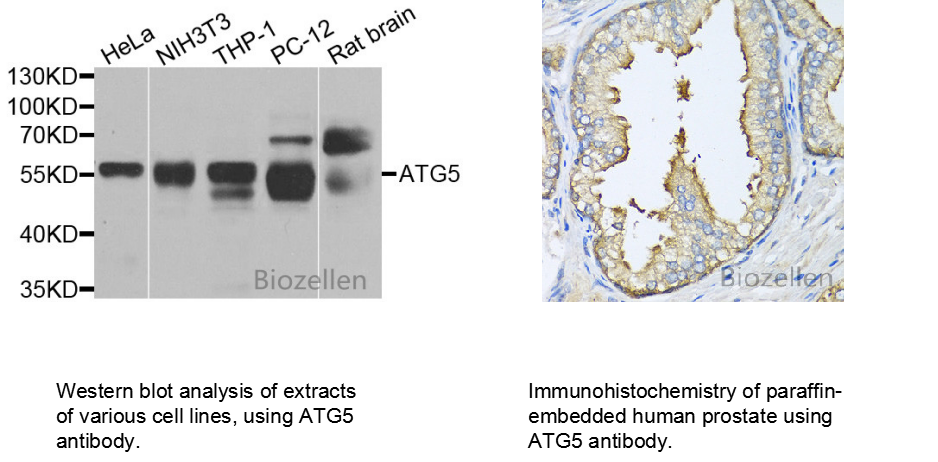| Synonyms | APG 5,APG 5L,APG5,APG5 autophagy 5 like,APG5 like,APG5-like,APG5L,Apoptosis specific protein,Apoptosis-specific protein,ASP,ATG 5,Atg5,ATG5 autophagy related 5 homolog,ATG5,Autophagy protein 5,Autophagy related 5,hAPG5,Homolog of S Cerevisiae autophagy 5,OTTHUMP00000040507 |
| Swissprot | Q9H1Y0 |
| Source | Rabbit |
| Reactivity | Human,Mouse,Rat |
| Immunogen | Recombinant protein of human ATG5 |
| Application | WB,IHC |
| Recommended dilution | WB 1:500 - 1:2000 IHC 1:50 - 1:100 |
| Concentration | 1mg/ml |
| Clonality | Polyclonal |
| Cellular localization | Cytoplasm. Preautophagosomal structure membrane. Colocalizes with nonmuscle actin. The conjugate detaches from the membrane immediately before or after autophagosome formation is completed (By similarity). Localizes also to discrete punctae along the ciliary axoneme and to the base of the ciliary axoneme. |
| Isotype | IgG |
| Purification | Affinity purification |
| Conjugation | Unconjugated |
| Storage instructions | Store at -20℃. Avoid freeze / thaw cycles. |
| Storage buffer | PBS with 0.02% sodium azide, 50% glycerol, pH7.3. |
| Background | The protein encoded by this gene, in combination with autophagy protein 12, functions as an E1-like activating enzyme in a ubiquitin-like conjugating system. The encoded protein is involved in several cellular processes, including autophagic vesicle formation, mitochondrial quality control after oxidative damage, negative regulation of the innate antiviral immune response, lymphocyte development and proliferation, MHC II antigen presentation, adipocyte differentiation, and apoptosis. Several transcript variants encoding different protein isoforms have been found for this gene. |
